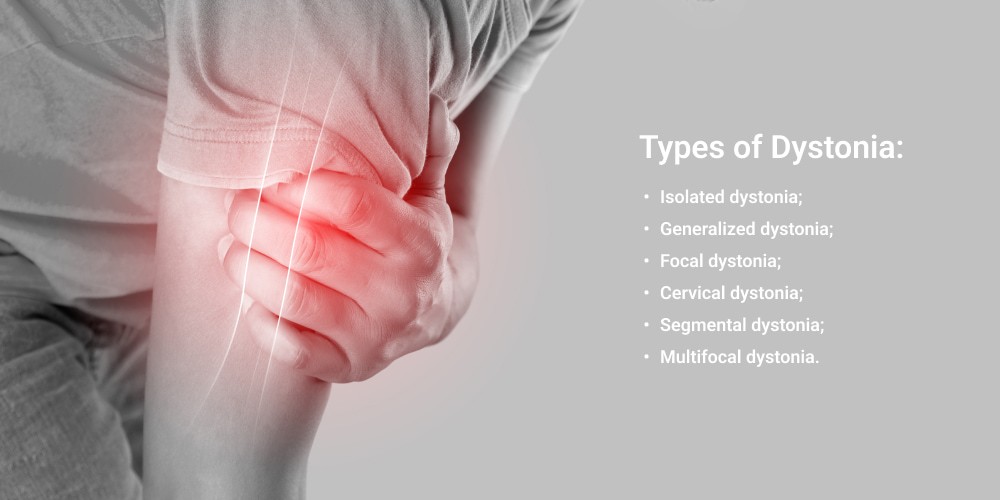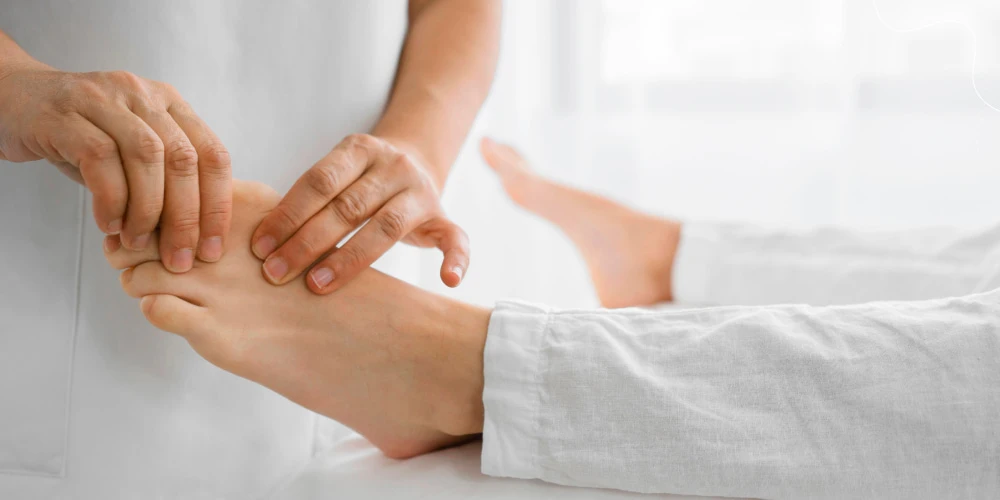Dystonia is a condition classified by muscle spasms and contractions. Although it cannot be cured, some remedies can help you control the symptoms. One treatment option is physical therapy. It can relieve symptoms and improve the quality of life. Physical therapy for dystonia focuses on exercises that can calm muscle spasms and enhance the range of motion.
The symptoms can range from mild to severe and may be intermittent or persistent. This disorder can lead to abnormal posture, twisting or repetitive movements, speech, vision, or swallowing problems if left untreated. The exact cause of this disorder is unknown; however, some cases may be triggered by emotional stress, an injury, or other damage to the nervous system. Here’s what you need to know about physical therapy for dystonia.
Types of Dystonia
There are many types of dystonia, and each type can cause different symptoms. Dystonia can be classified by:
- Age of onset;
- Body region affected;
- Cause;
- Pattern by muscle contractions.
It can be either static or progressive. Static dystonia means that the muscle contractions are constant and do not change over time. Progressive dystonia signifies that the muscle contractions gradually worsen over time.
Some common physical therapy exercises for all types of dystonia may be recommended:
- Stretching exercises. They can improve the range of motion and flexibility.
- Strengthening exercises. They can enhance muscle control and lessen fatigue.
- Balance and coordination exercises. They can increase balance and coordination.
Isolated Dystonia
This type affects only one body part, such as the foot, arm, or face. It is a disorder marked by persistent or sporadic muscle spasms that cause aberrant, frequently repetitive postures and movements. In some cases, medications may also be prescribed to relieve symptoms. Many people with isolated dystonia can live normal and active lives with treatment. Dystonia treatment physical therapy can consist of balance and coordination exercises.
Generalized Dystonia
It is the most common type and can affect any body part. Symptoms typically begin in childhood or adolescence and may worsen over time. Some suggested physical therapy exercises for generalized dystonia patients include:
- Isometric exercises. They involve contracting the muscles without moving the joints.
- Aerobic exercises. These exercises enhance the cardiovascular system and can reduce fatigue.
Focal Dystonia
This type is a neurological movement disorder that causes involuntary muscle contractions and abnormal postures. The cause is unknown, but it is thought to be related to a problem in the brain circuits that control movement. The condition can affect any body part but most commonly affects the hands, neck, or face. It can make it difficult for everyday activities such as writing, typing, or using utensils. The best therapy exercises will vary depending on the individual’s specific condition and goals.
However, the physical therapy exercises for dystonia include:
- Balance exercises to help prevent falls.
- Coordination exercises to enhance movement control.
- Pilates may also be beneficial.
Cervical Dystonia
Cervical dystonia is a form of focal type. This neurological disorder affects the neck and shoulder muscles. The cause of this condition is unknown, but it is suspected to be due to a problem with the brain’s control of muscle movement. Symptoms can include muscle spasms, cramping, and pain in the neck and shoulders. These symptoms can vary from mild to severe and may come and go over time.
All exercises for cervical dystonia must be strictly directed to correct the pathological position of the head and neck. Cervical dystonia physical therapy exercises can help to stretch and strengthen the affected muscles.
Segmental Dystonia
It affects only certain muscles or body segments. It can be caused by damage to the nervous system, genetic factors, or other unknown factors. Symptoms can vary from mild to disabling. They may include muscle spasms, cramping, tremors, and weakness. In some cases, it can cause pain.
It is recommended to do the range of motion exercises. These dystonia treatment physical therapies are designed to improve the range of motion in the affected muscles.
Multifocal Dystonia
It affects multiple muscle groups in the body. It can be debilitating, making it difficult to perform everyday tasks. The cause is unknown, but it is believed to be due to a malfunction in the basal ganglia, a structure in the brain that helps control movement. Symptoms can vary from person to person but may include muscle spasms, cramps, and tremors.
Physical therapy for multifocal dystonia can include aerobic exercises. These exercises can improve balance and coordination.
Diagnosis and Treatment Of Dystonia
There are a few different ways that dystonia can be diagnosed. A thorough medical history and physical examination are usually the first steps. Your doctor will ask about your symptoms and when they began. A doctor will also want to know if this disorder runs in your family.
Several tests may be used to diagnose dystonia. They may include:
- Blood tests: to rule out other conditions that can cause similar symptoms.
- Imaging studies: such as MRI or CT scan, can detect other causes of your symptoms, such as a pinched nerve or tumor.
- Electromyography (EMG): a test that measures the electrical activity of muscles to determine if dystonia is the cause of your symptoms.
- Nerve conduction studies: a test that measures how well and fast nerves send electrical signals.
After all the tests have been done, your doctor can tell if the dystonia is the cause of your symptoms. Then treatment can be started. The treatment typically relieves symptoms and improves the quality of life. Standard dystonia treatment physical therapy includes:
- Physical therapy exercises may stimulate muscle function.
- Botulinum toxin injections can relieve muscle spasms. These injections help relax the muscles affected by this disorder.
- Oral medications can reduce muscle spasms and pain.
- Deep brain stimulation is a surgical procedure involving the implantation of a device that sends electrical signals to the brain to relieve symptoms.
- In severe cases, surgery may be necessary to correct deformities or relieve pressure on the spinal cord or brain.
Dystonia Treatment Physical Therapy
Dystonia physical therapy typically involves a combination of stretching, strengthening, and balance exercises. If you have dystonia, regular exercise is significant to help maintain muscle strength and flexibility. The goal of dystonia physical therapy is to:
- Increase muscle control;
- Reduce pain and discomfort;
- Increase the range of motion;
- Improve the quality of life;
- Decrease stress and fatigue.
Swimming is a good option for dystonia physical therapy because it is a low-impact activity that does not put additional strain on the muscles. Yoga and Tai Chi are also good exercises for people with dystonia. These mind-body practices can improve focus and concentration and lessen stress and anxiety. It is vital to work with a physical therapist who is experienced in treating this condition, as they will be able to tailor an exercise program that is specific to your needs. A physical therapist can also teach you how to properly use assistive devices, such as splints or canes, if needed.
Dystonia treatment physical therapy is typically performed on an outpatient basis, which means you can attend therapy sessions while living at home. However, some people may require inpatient care if their symptoms are severe.
A Word from Lone Star Neurology Doctors
With proper diagnosis and treatment, dystonia does not have to be a debilitating condition.
Physical therapy may be an option worth exploring if you live with dystonia. You can live a more active and healthy life and get relief from the dystonia symptoms with the aid of physical therapy. Our Lone Star Neurology specialists can help create a treatment plan that works for you.
FAQs
- Can physical therapy help dystonia?
Physical therapy can be an effective treatment for dystonia, as it can help improve the range of motion and flexibility. Physical therapy may also help to reduce pain and discomfort associated with the condition.
- What is the best treatment for dystonia?
The best treatment for dystonia includes botulinum toxin injections, deep brain stimulation, and medication. In severe cases, surgery may also be an option.
- Does stretching help with dystonia?
Many people with dystonia find that regular stretching can help to reduce muscle tension and improve their range of motion.
- What triggers dystonia?
Some common triggers include physical and emotional stress, an injury, or other damage to the nervous system.















Please, leave your review
2 Comments
Lillian Eckert
22/10/2023
Very helpful!
Great information on exactly what to work on with this challenge.
John Hougan
25/02/2024
Informative……one of the best on exercise and dystonia.
my PD dx 2007…..
I find dystonia impacts are far
More debilitating than the PD.
Having been a fairly active PD Program exerciser (I find that I’ve had to back off doing exercises or break it up into smaller chunks now that dystonia is more prevalent
Write a comment: